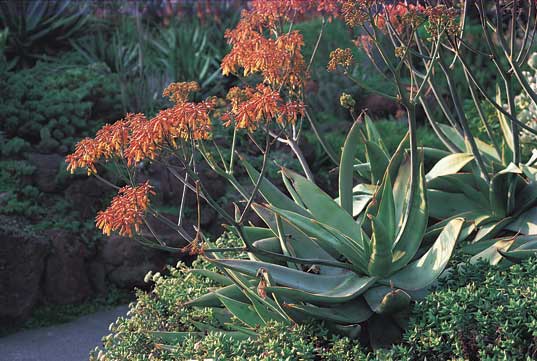This species is not nearly as common in cultivation as nursery catalogs might indicate, since most listings actually refer to look-alike hybrids. Though the A. striata genes dominate, these hybrids are recognizable by their toothy leaf margins and offsetting tendencies, a feature that lends to their vegetative propagation, explaining the predominance of the imposters in landscaping. The true species is almost always solitary and therefore must be propagated by seed. Also, the margins are unusual among aloes in being entire. Only upon close inspection are the most minute denticles evident. The margins are especially prominent when grown in bright light, which gives them a lovely coral-pink hue that contrasts with the light-green, lineate leaf-surface. The flat-topped panicles bear bright orange flowers in winter and may be sufficiently long-lasting to coincide with the rapidly developing fruits that resemble plump green grapes. Second generation seedlings of HBG 81005, from seed originally collected by E. Aslander in the Oukloofberge, just S of the town of Prince Albert, W. Cape, S. Africa. $10.

Published in the Cactus and Succulent Journal, Vol. 74 (2), March - April, 2002


